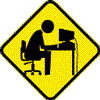Again, sorry for the lack of details on post #8, but I did use memtest86 to scan the RAM. That particular test came back without error.
UPDATE: I tried to install Windows XP from an external CD-R drive. The process proceeded through farther than with the on board DVD ROM and DVD+RW drive. Whereas the on board drives would only progress to "loading Windows" message on the bottom of the screen before hitting the BSOD, the external drive was able to progress all the way to the recovery vs. new install menu. However, when I tried to reinstall Windows, the setup did not detect any hard drive even though the BIOS setting recognizes the hard drive in place. Then I used my spare formatted hard drive and tried the same (except attempted a fresh installation). Again, the Windows setup failed to detect a hard drive even though the BIOS detected the switched hard drive (name of each hard drive displayed).
To summarize:
1. Computer having Boot Menu Loop problem. Restarts to menu option for safe mode and stuck at MUP.sys during Safe Mode.
2. Attempt to reinstall Windows from on board optical drives failed with BSOD after windows files loading, but before the recovery vs new installation menu option appears.
3. Attempt to reinstall (and fresh install) Windows from external USB optical drive failed with inability to detect hard drive even though hard drive recognized in BIOS. Unlike on board optical drives, it was able to reach the recovery vs new installation menu.
Earlier efforts to detect problem revealed:
4. Memtest 86 reveals RAM okay.
5. Original hard drive boots correctly in my other computer and is free of viruses (probably).
6. Disabling USB ports did not help. Disabling optical drives with cable detachment did not help. Computer still stuck in boot menu loop.
7. Switching out video card did not help. Same boot errors and installation errors.
I almost get the feeling that there's a problem with the optical drives as well as the hard drive. I'm hoping that the newest update will help determine the source of the problem. Thanks again for all your help.
Edited by Curious D, 17 June 2009 - 05:27 PM.
















 Sign In
Sign In Create Account
Create Account

